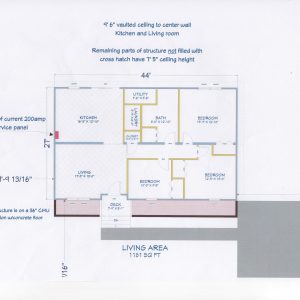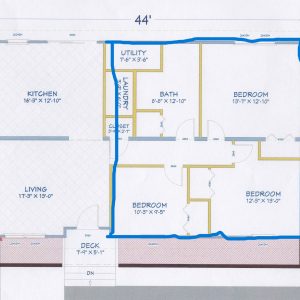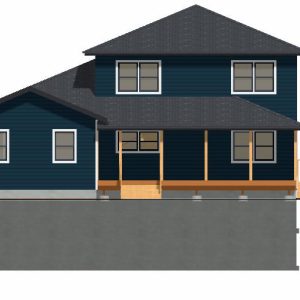Large home addition, raising wall height
Currently living in a modular rancher just under 1200 sqft 3 bed 1 bath on a crawlspace foundation, roof is truss so the bottom chords/ceiling joists are 2×4. My wife and I Purchased this home in 2015 (Southern NJ) with the notion of building on at some point because we like the area and specifically where the house is at since we are on a dead-end street on a little less than a half acre. With a 1 ½ year old and a second baby due in December we agreed on making a plan to execute in in the next 2-3 years before kid #3 probably comes along. Plan being building on or moving, and after this year putting substantial offers on about 8 houses the past 7 months we are to the point where we want to stick to an addition. The current floor plan and the proposed addition floor plans attached, brief description is adding roughly 2000 sqft in the form of a larger first floor; master bedroom with wic/on suite, laundry room, larger kitchen and a dining room, covered porches front and rear. Second floor; 3 bedrooms, bedroom/office (we don’t know if we are having 3 or 4 yet lol), bathroom, and a second living area which would bring the house to about 3200sqft all on crawlspace foundation.
We have been screwing around with plans for a year or so on chief architect with multiple ideas, originally I wanted to bump out the rear of the house and put a basement in but the cost of underpinning and the foundation would blow our budget after I got quotes on the foundation work, I kinda threw this one together as an idea. My main concern/deal breaker has to do with the current area of the home that isn’t vaulted, as the ceiling is 7’5” give or take which I think looks awful and makes the rooms look even smaller with me being 6’6”. Seeing as the roof is truss there would need to be floor joints put down anyway and my question is raising the first floor wall height when building the second floor. Doing some of my own research I saw a project where they essentially put an LVL on the perimeter of the structure, strapped and sheathed over to inhibit any hinge effect then built the second floor on top. In the picture with the crappy highlighting job, would the LVL header be able to go around that perimeter? I know that would make it visible in the stairwell which we are ok with, would probably do a faux finish on it in cedar. Has anyone had experience with this? I know an engineer would have to be involved but just wanted a little insite on it, I know its going to bump cost a bit but if we are going to build the house we want to stay in for the next 20 years I think it would be worth it. I know I need to change some things for load bearing walls like the larger utility room, but any questions from your side I will answer as best as possible!
























Replies
This is one of the processes I found with raising wall height 11 1/2" with LVLs then building the second floor on top.
That sounds like a solid approach. Raising the wall height with LVLs can provide the necessary structural support for building a second floor. It’s impressive how engineered wood products like LVLs can enhance both strength and stability. If you have any tips or further insights into this process, I’d love to hear more.
Using LVLs along the perimeter sounds like a solid approach to raise the wall height and add the support needed for a second floor. Consulting an engineer for load-bearing areas will be crucial to keep everything stable. It’s a smart plan for creating the space you need long-term!
Since you have been working with an architect, do not burden them with a solution you found on the internet.
Evaluation of the existing structure is needed before repurposing the existing walls and included headers for a second floor.
Do you have prints for the original modular home structure, or can you get them?
Raising wall height of the house is different than that of a garage.
You might be better off stripping drywall from walls and starting over vs trying to patch in more at the top.
Seems like a good time to also carefully evaluate the insulation and sealing of the entire home. Over the next 20 years you will reap the benefits of any improvements that are needed.